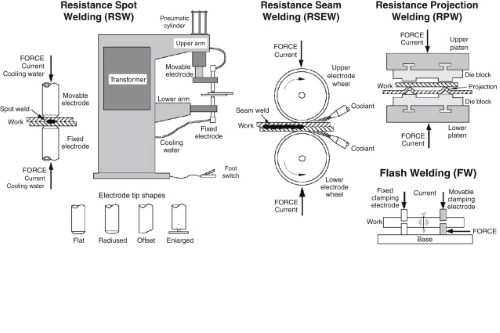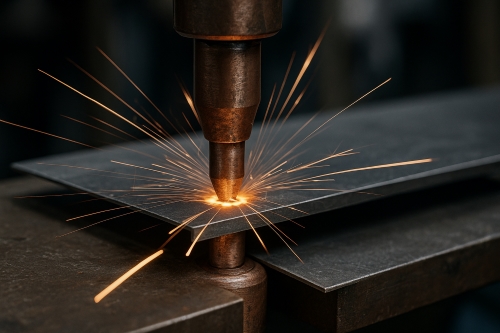Types of Oxide Sputtering Targets and Their Applications
Introduction
Sputtering is a common method to deposit thin films on substrates. In many modern devices, oxide sputtering targets play a key role. These targets consist of metal oxides that are used in thin film coatings. They are used to form layers for electronics, solar cells, and displays. Below is a simple view of the different types of oxide sputtering targets and explains their common applications.
Transparent Conductive Oxides
Transparent conductive oxides have a dual function. They allow light to pass through while conducting electricity. One well-known example is indium tin oxide. This material is used in flat screen displays, touch panels, and solar cells. In many cases, materials such as aluminium-doped zinc oxide are used because they are less expensive. They are also used in thin film transistors (TFTs). Transparent conductive oxides help in reducing energy losses in devices. They are produced by sputtering techniques that ensure uniform thickness. The process produces films that are stable and durable. In many cases, the deposition occurs on glass or flexible substrates to suit different end uses.
Dielectric Oxides
Dielectric oxides serve as insulators in thin film devices. They are vital in capacitor technology and protective coatings. Titanium dioxide and silicon dioxide are common examples. They also appear in optical coatings that require a refractive index difference. In some cases, zirconia is used because of its high thermal stability. Dielectric oxides prevent short circuits in electronic devices. They also act as barriers between layers. These materials assist in extending the lifespan of microelectronic circuits. The sputtering process for dielectric oxides is adjusted to produce films with low defect densities. This results in higher quality coatings for various electrical components.
Magnetic Oxides
Magnetic oxides have unique properties that suit them for specific applications. They are used in data storage, sensors, and spintronic devices. Nickel ferrite and cobalt ferrite are common examples. These oxides offer stable magnetic properties over a range of temperatures. They are also used in microwave devices because of their resonance properties. The sputtering process produces films that maintain magnetic strength and stability. Magnetic oxide films can be combined with other materials to build hybrid devices. Experience shows that proper control of the sputtering parameters leads to improved film quality. In many cases, the films are deposited on silicon wafers for research and product development.
Semiconducting Oxides
Semiconducting oxides find numerous uses in modern electronics. Tin oxide and zinc oxide are widely used in gas sensors and solar cells. They have a band gap that can be tuned for specific applications. In certain cases, doped semiconducting oxides are used to control electrical conductivity. These materials are also promising for use in light emitting devices. The sputtering deposition allows for precise control of film thickness and composition.
Functional and Superconducting Oxides
Functional oxides include a range of materials with unique electrical and magnetic behaviours. Examples include perovskite structures and piezoelectric oxides used in sensors and actuators. Superconducting oxides like yttrium barium copper oxide are used in advanced electronics. They carry large currents with no resistance at low temperatures. These films are crucial for research in high-speed electronics and energy-saving systems. Applying sputtering techniques to functional and superconducting oxides requires careful control. Temperature, pressure, and target composition are all important factors. With proper settings, the resulting films display excellent performance in their respective applications.
Industry Applications
Oxide sputtering targets are used in many industries. In the electronics field, they provide films for displays, touch screens, and integrated circuits. In renewable energy, they are employed in solar cells and smart windows. Dielectric and functional oxides serve in the automotive industry for sensors and control systems. Magnetic oxides support data storage and microwave communication systems. The sputtering method creates layers that are uniform and durable. The ability to tailor material properties means that industries can meet specific design needs.
Conclusion
Oxide sputtering targets are essential for modern technology. They come in many types and serve a wide range of applications. Transparent conductive oxides, dielectric oxides, magnetic oxides, semiconducting oxides, and functional and superconducting oxides each offer unique benefits. The sputtering process helps deposit thin films with precise control. For more information, please check Stanford Advanced Materials (SAM).
Frequently Asked Questions
F: What are oxide sputtering targets used for?
Q: They are used to form thin film coatings in displays, solar cells, sensors,
and many other electronic devices.
F: How is the quality of oxide films controlled?
Q: The film quality is controlled by adjusting sputtering parameters such as
oxygen flow, temperature, and pressure.
F: Can oxide sputtering targets be used in renewable energy?
Q: Yes, they are commonly used in solar cells and smart windows in renewable
energy systems.

 Bars
Bars
 Beads & Spheres
Beads & Spheres
 Bolts & Nuts
Bolts & Nuts
 Crucibles
Crucibles
 Discs
Discs
 Fibers & Fabrics
Fibers & Fabrics
 Films
Films
 Flake
Flake
 Foams
Foams
 Foil
Foil
 Granules
Granules
 Honeycombs
Honeycombs
 Ink
Ink
 Laminate
Laminate
 Lumps
Lumps
 Meshes
Meshes
 Metallised Film
Metallised Film
 Plate
Plate
 Powders
Powders
 Rod
Rod
 Sheets
Sheets
 Single Crystals
Single Crystals
 Sputtering Target
Sputtering Target
 Tubes
Tubes
 Washer
Washer
 Wires
Wires
 Converters & Calculators
Converters & Calculators
 Write for Us
Write for Us
 Chin Trento
Chin Trento



